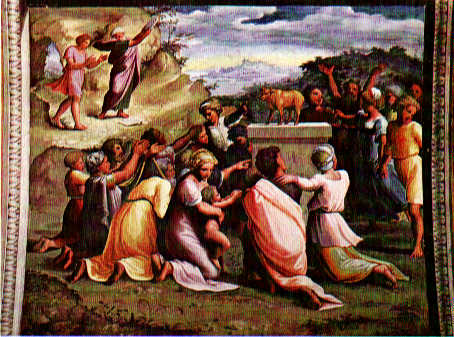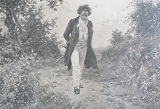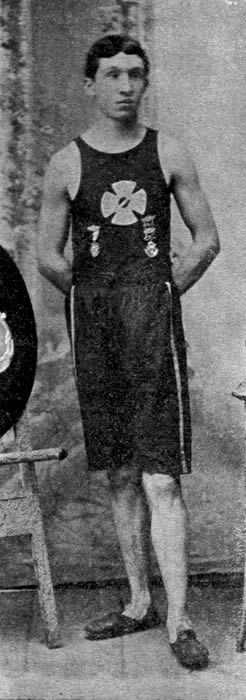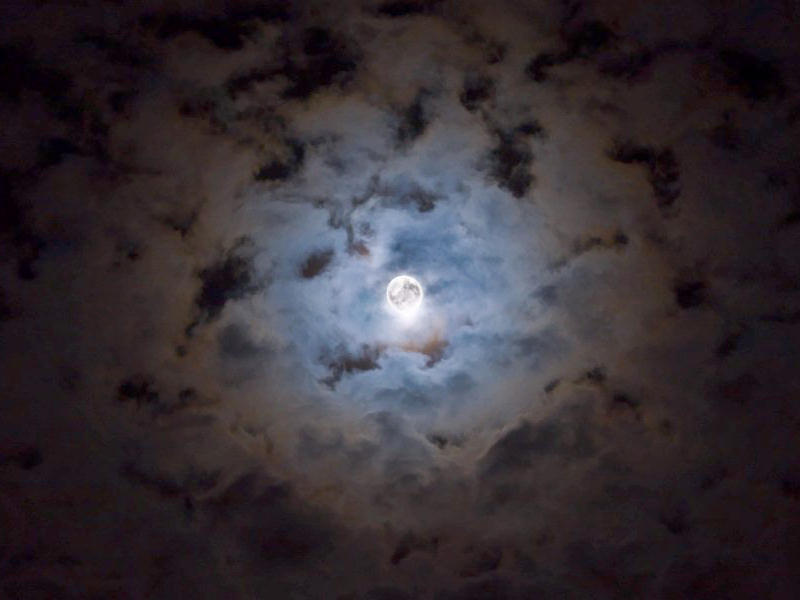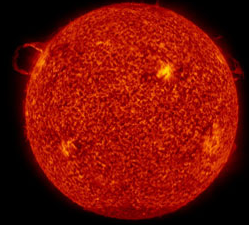

|
At last we can agree Since last month’s surprise discovery of a mistaken calibration in
nuclear decay rates, the progression toward agreement between Science
and the Church has been gratifyingly smooth and rapid. |
1 April 2010
|
|
Wisdom from children
“The traits that the word ‘childish’ addresses are seen so often in adults, that we should abolish this age discriminatory word when it comes to irresponsibility and irrational thinking.”
“For better or worse, we kids aren’t hampered as much when it comes to thinking of reasons not to do things...Sometimes a knowledge of history and past failures of utopian ideals can be a burden. We kids still dream about perfection, and that’s a good thing.” — Adora Svitak, profesional kid |
2 April 2010
|
|
Renunciation of war No more the thirsty entrance of this soil — Shakespeare (opening of Henry IV pt 1) |
3 April 2010
|
|
Is it better to meditate or not to meditate? One of the great insights that come from examining the contents of my own mind is that judgments of ‘good’ and ‘bad’ are arbitrary. I make them up. You make them up. Groups of people, large and small, make them up and justify them in myriad ways with logical relations to other peoples’ judgments about good and bad. Social values have for millenia been used to coerce and manipulate some people into behaviors that others prefer, with results that have been glorious and horrific and both. But the bottom line is that there is no bottom line. This doesn’t just liberate me from my preferences (things like cole slaw and socialism). It goes beyond questions about my chosen ways of living (vegetables, environmental stewardship, bicycling, Brahms). It threatens to erode my deepest values: non-violence, emotional honesty, clarity of thought, self-care. A paradox is that it also undermines its own source: It may be true that all values are arbitrary, but what’s the big deal about truth? Others might prefer their own particular foma*, and what have I to say to them? Why, then, should I meditate? It is an absurdity to say that meditation is good, or that people who meditate are better people, or that it is better to meditate than to watch baseball on TV. Perhaps this is the transition from witnessing myself to witnessing the witness. I’ll let you know when I get there. – Josh Mitteldorf *The primary tenet of Bokononism is to ‘Live by the foma that makes you brave and kind and healthy and happy.’ |
4 April 2010
|
|
Hope and Fear Beneath the shadow of dawn’s aërial cope, — Algernon Charles Swinburne, born this day in 1837 Fate is a sea without shore, and the soul is a rock that abides. |
5 April 2010
|
|
Patriotism? “Just as love for one individual which
excludes the love for others is not love, love for one’s country which
is not part of one’s love for humanity is not love, but idolatrous
worship.” All these motives made me into a passionate pacifist and
anti-militarist. I am against any nationalism, even in the guise of mere
patriotism. Privileges based on position and property have always seemed
to me unjust and pernicious, as did any exaggerated personality cult.
|
6 April 2010
Adoring the Golden Calf, |
|
Extending human life span, without knowing how Human senescence has been delayed by a decade. This finding, documented in 1994 and bolstered since, is a fundamental discovery about the biology of human ageing, and one with profound implications for individuals, society and the economy. Remarkably, the rate of deterioration with age seems to be constant across individuals and over time: it seems that death is being delayed because people are reaching old age in better health. Research by demographers, epidemiologists and other biomedical researchers suggests that further progress is likely to be made in advancing the frontier of survival — and healthy survival — to even greater ages... The future is uncertain, but it seems plausible that very long lives may be the probable destiny of younger people alive today. If progress in reducing mortality continues at the same pace as it has over the past two centuries, which is a matter of debate, then in countries with high life expectancies most children born since the year 2000 will celebrate their 100th birthday — in the twenty-second century. Longer lifespans will alter the way individuals want to allocate time during their lives and will require radical revision of employment, retirement, health, education and other policies. — James Vaupel, writing in a special issue of Nature devoted to aging |
7 April 2010
|
|
Be still, and the world is bound to turn herself inside out to entertain you. Everywhere you look, joyful noise is clanging to drown out quiet desperation. — Barbara Kingsolver, born this day in 1955 |
8 April 2010
|
|
Mindful of you |
9 April 2010
|
|
By the Margin of the Great Deep WHEN the breath of twilight blows to flame the misty skies, When the trees and skies and fields are one in dusky mood, From our immemorial joys of hearth and home and love Aye, and deep and deep and deeper let me drink and draw — George William Russell (wrote under the pen name AE), born this day in 1867 |
10 April 2010
|
|
Before the 20th century we would inhabit time and space; now we utilize them. —Josh Mitteldorf |
11 April 2010
|
|
Novel approach to diabetes and other auto-immune diseases APCs (antigen-presenting cells) are specialized white blood cells that grab tiny bits of protein off the surfaces of other cells (like invaders or, in the case of diabetes, beta cells), chop them into pieces (antigens) and present them to T cells to instigate the immune response. From there, two things can happen: If an aggressive T cell encounters the APC, then it will take the antigen and run with it. It will look for cells with that antigen, attack them and kill them. But if a weak T cell encounters the APC, the APC is treated as a false alarm, and the weak T cell kills the APC. ‘Essentially, there is an internal tug-of-war between aggressive T
cells that want to cause [an autoimmune response] and weaker T cells
that want to stop it from occurring,’ says study senior author Pere
Santamaria from the Julia McFarlane
Diabetes Research Center at the University of Calgary in Alberta.
Although they have seemingly opposite effects, these different classes
of T cells are ‘musicians in the same orchestra,’ Santamaria explains.
And they take directions from the same conductor—the antigen-presenting
cell (APC). Santamaria’s approach to autoimmune diseases is to strengthen the response of the weak T cells, and use them to kill the APCs that are causing an autoimmune response. He designed a ‘vaccine’ to boost the activity of the weak T cells. He used nanoparticles—spheres thousands of times smaller than a single cell—that were coated with beta cell antigens. In doing so, he created an APC doppelganger that could repeatedly activate the weak T cells, causing them to proliferate and kill the real APCs. The nanoparticles shield the antigens from degradation, meaning they stay in the system much longer, so they can be delivered at fewer intervals and at lower doses. The catch is that, to design the vaccine, he has to know the specific antigen which the immune system is attacking inappropriately. It works for Type I diabetes, in which the immune system attacks the islet cells of the pancreas. It’s more difficult for it to work against lupus, which is a more generalized autoimmune response. To date, Satamaria has cured diabetes in mice. Human clinical trials are the next big project. — from Scientific American |
12 April 2010
The nanovaccine fights type 1 diabetes by boosting the immune system’s built-in safety mechanism--regulatory T cells that squelch overactive immune responses. |
|
Who is the composer? Beethoven had an inimitable style. There’s no mistaking a piece that’s by Beethoven. If this is true, doesn’t it imply that there should be attributes you can derive by induction, listening to Beethoven’s music. Perhaps you could even program a computer to look for such attributes. A wild-eyed idea would be to ask the computer to create a new composition that ‘sounds like Beethoven’. Of course, it would be missing Beethoven’s genius... Judge for yourself. David Cope made a name for himself by combining high levels of expertise in music and in computer programming. It was an early computer program by Cope that spit out the Beethoven immitation twenty years ago. Both expertises have advanced, and now Cope collaborates with his AI colleague, who he calls Emily Howell. Together, Cope and Howell have released an album of piano music. Is it missing that certain something that marks creative genius? At one Santa Cruz concert, the program notes neglected to mention that Emily Howell wasn’t a human being, and a chemistry professor and music aficionado in the audience described the performance of a Howell composition as one of the most moving experiences of his musical life. Six months later, when the same professor attended a lecture of Cope’s on Emily Howell and heard the same concert played from a recording, Cope remembers him saying, “You know, that’s pretty music, but I could tell absolutely, immediately that it was computer-composed. There’s no heart or soul or depth to the piece.” |
13 April 2010
|
|
“It is a paradoxical but profoundly true and important principle of life that the most likely way to reach a goal is to be aiming not at that goal itself but at some more ambitious goal beyond it.” — Arnold Toynbee, born this day in 1889 |
14 April 2010
|
|
Only once All which, because it was |
15 April 2010
|
|
Google translation is improving Language differences remain one of the greatest sources of cultural misunderstanding, leading to prejudice, racism and xenophobia. The Artificial Intelligence community has targeted natural language for fifty years, and the holy grail has been a computer program that can extract meaning, implications and interpretation from written text in the same way that a human reader does. Google has another approach, built on what it does best, which is to mine huge quantities of data. The Google translation tool (freely available online) was written without any attempt at ‘understanding’ as we understand understanding. Instead, Google starts with a digital Rosetta Stone. Millions of words of human-translated text are subjected to a statistical analysis. A small sample of text serves as a basis for matching and correlating individual words in two separate languages. A larger sample of text can be used to match two-word phrases, and for three-word phrases, a much larger sample is needed. There are obvious limits to such an approach, especially for languages with grammars that differ significantly. We can only assume that Google programmers are not so dumb, and some awareness of grammar is used to supplement the basic word statistics. Soon we’ll carry serviceable, real-time translation tools in our cell phones. We’ll read texts in other languages without giving it a second thought, and we’ll be able to hold conversations when we travel to other countries, even if we haven’t studied the language. Already, international travel and communication has made it much more difficult for our governments to demonize the ‘other’ and incite us to war. Global communication will support global communities, global peace, and global cooperation. ‚Glaubt es mir - das Geheimnis, um die größte
Fruchtbarkeit und den größten Genuß vom Dasein einzuernten, heisst:
gefährlich leben.’ ‘Believe me - the secret to the greatest fruitfulness and the
greatest enjoyment from existence reap means: to live dangerously.’ |
16 April 2010
|
|
We think with our eyes and our hands, and when we walk we think more clearly ‘Our ability to think has long been considered central to what makes us human. Now research suggests that our bodies and their relationship with the environment govern even our most abstract thoughts.’ This article by Anil Ananthaswamy cites some pretty indirect and quirky evidence for the thesis, but it is nevertheless a profound truth, none the less so because it was already well known to the ancient Greeks. We think with the whole nervous system and the body to which it is attached. We are not disembodied brains. Our thoughts are thoroughly affected by posture, environment, activity, and perception. On the one hand, this is obvious to any of us who have devoted a moment’s introspection to the question. On the other hand, we are not in the habit of putting the knowledge to good use, to help us think better or more clearly or more optimistically by studying our own responses and discovering the environments and activities that help us think at our best. |
17 April 2010
|
|
Finished We have domesticated the moment,
Can I relinquish the safety of the known?
So many moments. So few that come alive.
Perhaps I am ready to embark for the jungle in my quest for peace. — Josh Mitteldorf |
18 April 2010
|
|
Running for health Marathon running used to be for elite athletes. In 1897, no one imagined that a recreational runner with another career could complete a 26-mile course. In the 1970s, running for health and sport became popular among Americans, and gradually spread to people who would not think of themselves as competitive athletes. A growing segment of the public began to take seriously the benefits of exercise for mental and physical health. For anyone trying to sustain a regular exercise program, motivation is a primary issue, and running can be done outdoors with the mind unfocused. It is not a complete exercise, and carries long-term risks for the knees, but it can be done any time, almost anywhere, with a minimum of equipment. And running is a huge improvement over no exercise at all. A growing segment of the American public is exercising regularly, and health we’re healthier as a result. The running craze is still running its course, and running serves as a ‘gateway drug’, sparking motivation for other forms of exercise. Winners of the early American marathons recorded times of just under 3 hours for a course that not yet standardized, and varied from 24 to 26 miles. The race was limited to young American males. The first women competed in 1972. Now you need a time of 3:10 just to qualify for the Boston Marathon. More than 26,000 runners from 71 countries were officially entered in today’s race. The youngest was 14 and the oldest was 81. Kenya’s Robert Kiprono Cheruiyot shattered the old course record by 82 seconds. |
19 April 2010
|
|
Jabir’s formula I want to woo Her, not view Her |
20 April 2010
|
|
‘Creative people, as I see them, are distinguished by the fact that they can live with anxiety, even though a high price may be paid in terms of insecurity, sensitivity, and defenselessness for the gift of the “divine madness” to borrow the term used by the classical Greeks. They do not run away from non-being, but by encountering and wrestling with it, force it to produce being. They knock on silence for an answering music; they pursue meaninglessness until they can force it to mean.’ — Rollo May, born this day in 1909 ...the self is only that which it is in the process of becoming. |
21 April 2010
Ghassan Lafi |
|
The good news about the Earth is the Sun The best news on Earth Day is that our Sun is still doing exactly what it is supposed to do, as far as we can tell utterly unaffected by human overpopulation, pollution, or resource depletion. The first pictures were released this week from NASA’s orbiting solar observatory. |
22 April 2010
|
|
The Conch Republic Fed up with the Reagan Revolution in 1982, the sovereign state of Key West seceded from the union on this day in 1982, forming the Conch Republic. The rest is history. “Dedicated to the fundamentally American spirit of a people unafraid to stand up to ‘government gone mad with power’ that embodies the founding of the Conch Republic in 1982, the world’s first Fifth World nation, a sovereign state of mind seeking only to bring more humor, warmth, and respect to a world in sore need of all three, the Conch Republic remains the country that seceded where others failed.” |
23 April 2010
|
|
Global democracy In times of war, nations unite to fight a common enemy. If the Earth were invaded from space, maybe mankind the world over would find forbearance to overcome our differences and make common cause. Ever perceptive, insightful, and finely-researched, Naomi Klein, reporting from Bolivia this week suggests that global warming might provide the impetus we need to recognize our global community. In the words of Bolivia's ambassador to the UN, Pablo Solón, “The only thing that can save mankind from a tragedy is the exercise of global democracy.” If he is right, the Bolivian process might save not just our warming planet but our failing democracies as well. Not a bad deal at all. |
24 April 2010
|
|
Scientism The physical Universe is reality. It is all there is, and it is subject to unfailing scientific laws that human intellect may discover. This is my Credo. My Sh’ma. My Salat. My Gayatri. Belief in science qualifies as a religion, as we usually understand the word. It’s a basic, unverifiable belief that supplies a framework for mental models of my experience. It’s a canon shared by a social group (the “Brights” is a moniker coined by Paul Geisert, popularized by Daniel Dennett) which offers mutual support for the belief that ours is the one true religion. We have our rituals (education, logical debate) and we have a moral code (individualism, freedom, humanitarian behavior) that is about as well-connected to our tenets as in other religions. The fact is that a minuscule proportion of the world’s phenomena have been scientifically studied and explained in detail. We have reasonable expectation that a larger, but still relatively minor set of phenomena might ultimately be embraced and explained by science. And as for the vast remainder, we take as an article of faith that science could, in principle, be extended to encompass those as well. Scientism is my religion. Maybe it’s your religion, too, and that’s how come you are reading this web page. But if you have a different religion, I honor and respect your beliefs, and invite you into a dialog. Perhaps we can learn from each other – and learning is a ritual practice of my religion. — Josh Mitteldorf (read the rest of this article) |
25 April 2010
|
|
O wonderful, wonderful, and most wonderful wonderful! and yet again wonderful, and after that, out of all whooping! — William Shakespeare, born this day in 1564 |
26 April 2010
|
|
The Dali Lama practices daily meditation visualizing his own dead body, as a means to enhance joy in the moment. Carl Sagan wrote, Six times now I have looked death in the face. And six time Death has averted his gaze and let me pass...I've learned much from our confrontations - especially about the beauty and sweet poignancy of life, about the preciousness of friends and family, and about the transforming power of love. In fact, almost dying is such a positive, character-building experience that I'd recommend it to everybody - except, of course, for the irreducible and essential element of risk. ...and this agrees with reports from friends of mine who have survived cancer. Katherine Russell Rich writes in today’s New York Times: When I was told I had a year or two, I didn’t want anything one might expect: no blow-out trip to the Galápagos, no perfect meal at Alain Ducasse, no defiant red Maserati. All I wanted was ordinary life back, for ordinary life, it became utterly clear, is more valuable than anything else. |
27 April 2010
|
|
How old is agriculture? I would have guessed between 10,000 and 20,000 years, imagining a transformation from hunter/gatherer tribes to permanent villages growing crops. But that’s just human agriculture. Ants have been farming fungi for their own consumption for about 50 million years. ScienceNow article Now, more than 200 species of New World ants cultivate crops, fastidiously fertilizing, cleaning, and weeding delicate white fungal filaments in their underground lairs. I don’t know how long ants have been keeping livestock — the relationship might be just as old. About.com article Ants protect aphids from predators, and store their eggs over winter, then carry them in the spring to their favorite plant food. The aphids are milked for a kind of honey that feeds the ants. I like to imagine how these complex mutualistic behaviors might have evolved in the ants’ primitive nervous systems. |
28 April 2010
|
|
Attribution Your task is not to seek for love, but merely
to seek and find all the barriers within yourself that you have built
against it. Your task is not to seek for love, but merely
to seek and find all the barriers within yourself that you have built
against it. It is not necessary to seek for what is true, but it
is necessary to seek for what is false. Every illusion is one of
fear, whatever form it takes. And the attempt to escape from one
illusion into another must fail. If you seek love outside yourself
you can be certain you perceive hatred within, and are afraid of it.
Yet peace will never come from the illusion of love, but only from its
reality. Helen Schucman (1909-1981) was a Jewish psychologist from New York who had a spiritual awakening and wrote, while in a trance, the text of A Course in Miracles, which she experienced as being dictated to her by Jesus. |
29 April 2010
|
|
THIS is he, who, felled by foes, — Ralph Waldo Emerson |
30 April 2010
|



